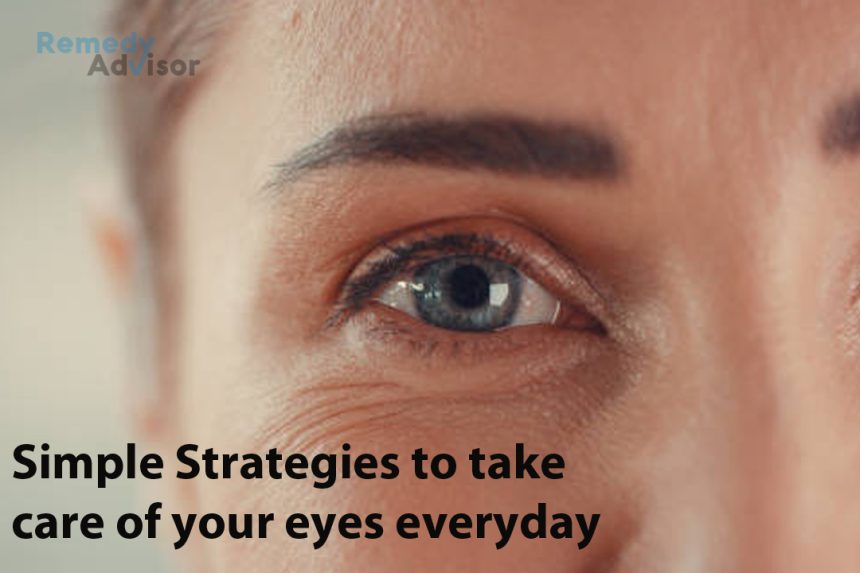Everyone over 40 not just those who wear glasses or contact lenses should see an ophthalmologist once every year or two and then annually after age 65. Most eye problems develop slowly, but the major diseases increase sharply after age 65.
Tests for eye health cost approximately $50 to $125. A visual field test for peripheral vision costs another $75.
Downside: Medicare may not pay for preventive care; especially if the doctor doesn’t t find a problem. The three most common eye diseases are cataracts, glaucoma and a disease that is less familiar to most macular degeneration. A cataract is a human eye lens that has lost some of its clarity and become cloudy or opaque. Age-related cataracts, the most common type, can start as early as age 40.
Rarer causes:
Eye injuries, certain drugs, including steroids (such as prednisone or cortisone), diabetes. Many people have some degree of cataract formation by their 60s or 70s.
The extent of impairment depends on the location and extent of haziness in the lens as well as to what the individual person is accustomed. A person who does crossword puzzles or fine sewing might be more bothered by cataracts than someone who doesn’t does close work or much reading.
The most common types of cataracts progress slowly and symptoms can be treated as they develop. In early stages, cataracts are treated with new eyeglass prescriptions and the use of sunglasses. Relatively few people with cataracts require surgery. When surgery is necessary, however, it’s nice to know that cataract surgery is one of the most consistently successful operations performed today. Unless an additional eye disease has intruded, the chance of restoring vision to its former level is more than 95%.
The surgeon removes the cloudy inner part of the human lens (cataract) and replaces it with an artificial lens. The outer part of the human lens (the capsule) is left in place. About one-third of the time, the capsule grows hazy and an opening must be cleared with painless laser treatment months or years later.
Previously, treatment techniques required waiting until a cataract was “mature” before it could be frozen and removed. Now the timing is based on individual need, such as a person’s inability to drive a car or play golf. Cataract surgery enables many people to drive for the first time in many years.
Glaucoma
Glaucoma is a group of disorders that involves excessive pressure within the eye. Damage to the optic nerve causes partial vision loss. The degree of severity varies greatly.
Only an ophthalmologist can interpret the subtle tests required to make a diagnosis. Most cases of glaucoma can be controlled before loss of vision is significant.
Keys to success
Early detection, proper treatment, compliance with doctor’s orders.
The most common type primary open angle glaucoma is an insidious disease that’s treatable in early stages but can progress to permanent blindness.
The “angle,” formed by the cornea and iris, contains the meshwork of the eye that permits fluid to drain out.
The incidence increases dramatically after age 40 (striking about 2% of people in that age group), and increases steadily after that.
Symptoms usually don’t appear until loss of peripheral vision becomes noticeable. Only regular eye exams will catch this type of glaucoma early.
The slow loss of peripheral vision can creep up on you. Tip-offs: You trip over furniture drive up on curbs turn your head more broadly to see around you
Treatment: Eye drops, pills, laser surgery and possibly conventional incisional surgery.
Much rarer: Narrow angle and acute angle closure glaucoma. Drainage from the eye shuts down. This may cause sudden, severe pain (usually in one eye), blurred vision, redness and swelling in the eye, headache and nausea.
Macular degeneration

A frequent cause of the loss of sharp vision is macular degeneration. The macula is the central portion of the retina, which is a thin, transparent tissue that serves as the nerve cell layer of the eye.
The most common type by far is dry (atrophic) macular degeneration, which often causes no symptoms. Only an ophthalmologist can properly diagnose it.
Rarer: Wet (exudative) macular degeneration, a hemorrhage into the macula, accounts for about one-tenth of cases but more than 90% of severe visual loss caused by age-related macular degeneration.
Main symptom:
A gradual loss of central vision or, in the case of “wet” macular degeneration, a sudden drop-off of vision.
Other causes of sudden vision loss include acute glaucoma, blood clots and hemorrhages. Migraines can also cause sudden, temporary loss of vision, usually off to one side.
Photodynamic therapy, which uses a low powered laser in concert with the drug verteporfin, has shown great promise in arresting the downward course of the “wet” variety.
Retinal breaks and detachment
A retinal break is a round hole or horseshoe-shaped tear within the retina. Fluid can pass through and gather below the retina, dragging it away from the layers of the eye beneath leading to a retinal detachment. A tiny detachment may not be noticed but larger detachments can lead to profound vision loss and even blindness.
At risk: Anyone who has had an eye injury or blow on the head is very nearsighted has a family history of retinal breaks or detachment and has severe diabetes. Some diabetics develop abnormal scar tissue in the vitreous gel (a thick, clear, jelly-like substance that fills the eyeball, cushioning and protecting it from within) that can contract, causing retinal tears and detachments.
Modern advances have made retinal tears and detachment much less common after cataract surgery than they used to be. More rarely, a retinal tear can also cause a torn retinal blood vessel, resulting in bleeding into the vitreous gel. This in turn can cause sudden loss of vision.
Symptoms of a retinal break
You may see “flashers” or “floaters” or suddenly notice that a specific part of your vision is “missing,” suggesting that a large section of the retina has become detached. Some retinal detachment can also cause few or no symptoms and only be discovered during a thorough eye examination.
Treatment for a retinal break: An ophthalmologist carefully tracks any retinal break for the development of retinal detachment. Laser treatment is often used as a preventive measure.
Treatment for retinal detachment: Surgical reattachment, sometimes involving multiple procedures. The prognosis for recovery is best when treatment is prompt.
Protect yourself
- Wear sunglasses with ultraviolet-blocking lenses.
- Keep your blood pressure normal.
- Take supplements of vitamins A, C and E and minerals zinc and selenium. The compounds made specifically for eyes are generally better than multivitamins because they contain larger amounts of zinc and selenium.
- Eat a healthy diet. A proper diet is better for your eyes than vitamin supplements. Favor dark green, leafy vegetables such as spinach and collard greens. In one impressive study of people with early macular degeneration, those who ate a diet heavy in dark green vegetables were three to four times more likely to preserve good vision than those who did not.
- Don’t smoke. Smoking robs the eyes of important nutrients and aggravates cataracts.
Follow the above recommendations even more closely if you have either of two risk factors that can’t be controlled:
A genetic predisposition the condition tends to cluster in families and eye color.
People with light-colored eyes, especially those with blue irises, have a much higher incidence of macular degeneration.
To be sure all’s well, take a simple test with your glasses on. Cover one eye at a time. Do you see equally well through both?







